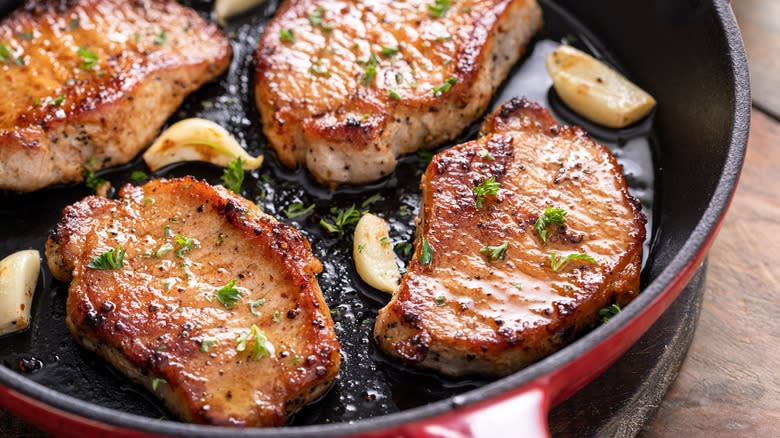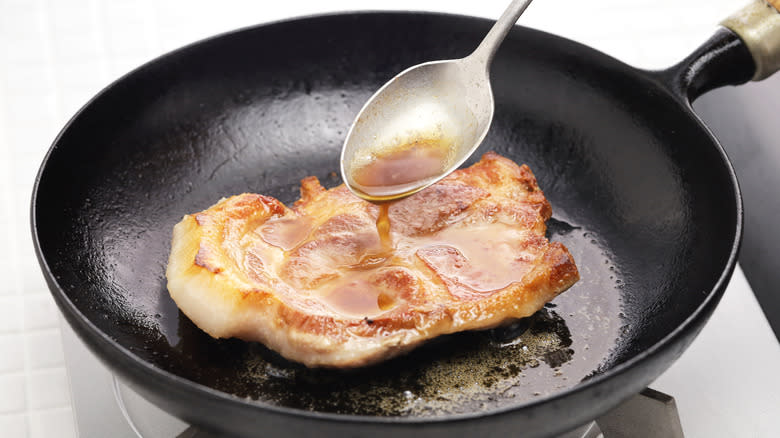For Juicy Pork, Baste Your Chops Like A Steak

If you've ever cooked pork chops for an easy dinner, you might be aware that the meat can easily be overcooked and turn out dry. There are some ways to prevent this, like cooking them at the proper temperature, but we've got a technique that will guarantee your pork chops stay juicy every time: Basting them with butter as you may do with steak.
For inspiration, we turned to our original recipe for pan-seared pork chops with parsnip-apple purée from the Tasting Table Test Kitchen. The trick in this recipe is to partially cook the chops in oil for about four to five minutes, remove the chops, reduce the heat, then add butter and herbs to the pan to infuse the dish with flavor. Once the butter is melted, our recipe recommends returning the pork to the pan and using the herb-infused butter to baste the pork meat constantly until it's fully cooked, which takes about three minutes per side.
What is basting anyway? It's a cooking technique that uses those pan drippings, or butter in this case, to cover, or baste, the meat. The liquid at the bottom of the pan is already full of flavor, so it's a way to make sure it doesn't go to waste. It gives the meat moisture and elevates its flavor, which is why we think it's an ideal way to keep your pork chops juicy every time.
Read more: 13 Underrated Cuts Of Meat You Should Be Grilling
Tips For Basting Pork Chops

Basting works for any pork chop recipe that cooks on the stovetop, but the cut of pork matters. To get the most flavor and avoid overcooking, use bone-in chops. Ford Fry, chef and owner of The Optimist restaurant in Atlanta, Georgia previously told Tasting Table that he prefers one-inch thick chops because "it has enough time to caramelize on the outside, while resulting in a juicy medium interior." On the contrary, thin pork chops tend to cook and dry out fast — perhaps even before you have time to baste.
If you're using another recipe, remember that the chops should be mostly cooked before it's time to baste them, but don't wait until they're done. Instead, cook them according to your recipe. Then during the final minutes use a spoon, basting brush, or baster to cover the outside of the chops with the butter and drippings until they're fully cooked. Use a thermometer to check on the pork's internal temperature to avoid overcooking. For reference, the USDA recommends an internal temperature of 145 degrees Fahrenheit for fully cooked pork chops.
Here are a couple of other easy basting tips for pork chops: Use unsalted butter to prevent over-salting the pork chops, because you'll season them before it's time to baste. Finally, put fresh herbs like thyme and rosemary, and garlic cloves in the pan to give the drippings lots of flavor, which will be infused into the pork.
Read the original article on Tasting Table.

